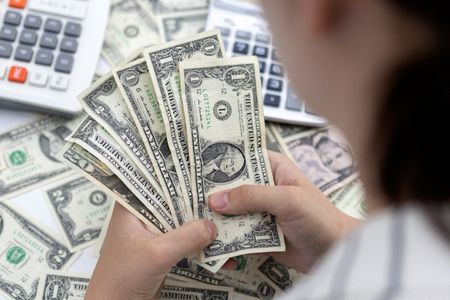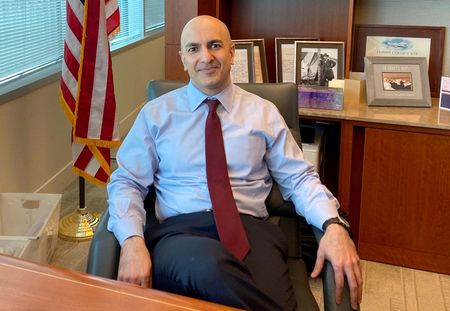(Reuters) – The Federal Reserve should continue hiking interest rates at its next few meetings at a minimum until it is sure that inflation has peaked, Minneapolis Fed President Neel Kashkari said on Wednesday, as he set out his own forecast that the policy rate should initially pause at 5.4%.
“In my view … it will be appropriate to continue to raise rates at least at the next few meetings until we are confident inflation has peaked,” Kashkari said in an essay posted on the regional Fed bank’s website, even as he noted increasing evidence price pressures appear past their worst.
The U.S. central bank, which rapidly raised interest rates in 2022 to combat high inflation, is eyeing a stopping point in its current tightening cycle in the spring of this year. Its main policy rate currently sits in a target range of 4.25% to 4.50%.
Minutes of the Fed’s last policy meeting in December showed rate-setters still focused on controlling the pace of price increases amid worries of any “misperception” in financial markets that their resolve to fight inflation was in any way flagging.
Kashkari’s forecast of 5.4% as a point at which to pause is at the more aggressive end of Fed policymakers, although 15 of 19 of them expect the target rate to rise by either three-quarters of a percentage point or a full percentage point in coming months.
Kashkari, whose projections last year of where interest rates would need to go in 2023 were the most hawkish of all Fed policymakers, also said rates would have to be held at their initial peak for a “reasonable” period to allow time for the central bank’s actions to work their way through the economy and continue to bring inflation to heel.
He also cautioned that the road would likely be bumpy and indicated a bias to overshooting rather than undershooting on bringing inflation down.
“To be clear, in this phase any sign of slow progress that keeps inflation elevated for longer will warrant, in my view, taking the policy rate potentially much higher,” Kashkari said.
Fed Chair Jerome Powell has also made plain that the central bank expects to hold rates at a high level for an unspecified period of time and has pushed back against expectations for rate cuts this year.
Of course, much depends on how incoming data, in particular on inflation and labor market strength, reinforce that view. Despite a waning of price pressures late last year, the Fed’s preferred inflation gauge is still rising at a 5.5% annual rate, more than twice the U.S. central bank’s 2% target.
Data released on Wednesday also showed job openings, a closely watched indicator as a proxy for labor market shortages and pressure on employers to give higher-than-normal wage increases, fell only moderately in November.
For his part, Kashkari reiterated the Fed must avoid cutting rates prematurely. “That would be a costly error, so the move to cut rates should only be taken once we are convinced that we have truly defeated inflation,” he said.
Drawing on the unexpected surge in inflation caused by supply and demand imbalances over the past two years, Kashkari also chided the inability of traditional economic frameworks at the Fed and elsewhere to forecast inflation outside of labor market and inflation expectation channels and called for new models to predict high inflation.
“From what I can tell, our models seem ill-equipped to handle a fundamentally different source of inflation, specifically, in this case, surge pricing inflation,” he said.
(Reporting by Lindsay Dunsmuir; Editing by Paul Simao, Andrea Ricci and Chizu Nomiyama)


